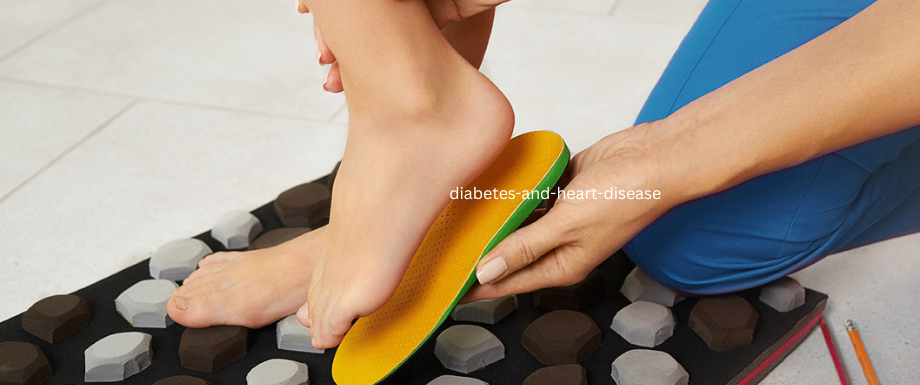Many people suffering from diabetes tend to face foot problems. Excess of glucose (sugar level) in the blood causes nerve damage and poor blood flow leading to a number of foot problems. This not only affects the way one walks but can also lead to amputation. Such foot problems appear to be more common in people with the following conditions:
• Problems controlling blood sugar levels
• High cholesterol
• High blood pressure
• Overweight
• Older than 40 years of age
Some of the foot complications that occur in people with diabetes are:
Diabetic Neuropathy:
Uncontrolled diabetes damages the nerves in the body leading to loss of sensation. One may not be able to feel heat, cold or pain. Nerve damage can also lead to changes in the shape of your feet and toes. One can use special therapeutic shoes to control the deformation of feet
Change in skin color:
Diabetes can also lead to change in color of the foot skin. The skin can turn pale/ or become red and sore, and can crack and peel. Germs can enter through the cracks in the skin and cause an infection. This occurs due to damage of the nerves that control the oil and moisture of the foot. One can use petroleum jelly or unscented hand cream to retain the moisture of the feet after bath to prevent the change in color of the skin. Applying oil and cream between the toes can also result in extra moisture, leading to infection
Calluses:
It is often seen that calluses build up faster in people with high sugar level. This is due to high-pressure areas under the foot. Calluses lead to ulcers and infections if not trimmed regularly. Using a pumice stone on a wet skin every day will help keep calluses under control, a lotion must be applied right after using the pumice stone to prevent loss of moisture and avoid dryness
Foot Ulcers:
A foot ulcer is a break in the skin or a deep sore, which can become infected. Foot ulcers occur most often on the ball of the foot. It can result from minor scrapes, cuts that heal slowly or from the rubbing of shoes that do not fit well. Neglecting ulcers can result in infections, which in turn can lead to loss of a limb. One must make sure that they take proper care of the foot after the foot ulcer heals. Protect the healed area by wearing waterproof shoes to prevent the ulcer from returning
Dry skin:
Diabetes can also cause dry skin, due to which cracks are caused in your feet, which can allow germs to enter. Use moisturizing soaps and lotions daily, but be sure your feet feel dry and not damp or sticky afterwards. Keep your toenails trimmed and filed smooth to avoid ingrown toenails
Fungal Infection:
Fungal infection of the toenails makes them thick, hard to cut, and appear yellow, green, brown, or black. A nail may also fall off. To prevent a fungal infection of the toenails, keep your feet as dry as you can, don’t wear the same shoes all the time, wear socks that do not trap moisture, and wear waterproof shoes or flip-flops during rainy season
Bunions, corns, and hammertoes:
When the big toe slants sharply towards the other toes, with a big bump on the knuckle of the big toe, it is called as bunion. Corns are spots of thick, rough skin, where the tissue builds up on toes due to too much rubbing or pressure. A hammertoe can result from muscle weakness caused by diabetic nerve damage. Padded shoes and medicines can help reduce the pain caused due to bunions, corns and hammertoes
Two main conditions, peripheral artery disease (PAD) and peripheral neuropathy, are responsible for the increased risk of foot problems in people with diabetes. These problems make it easy to get ulcers and infections that may lead to amputation.
Following are few measures one can follow to avoid these foot problems:
• Ensure good care of the feet: Use mild soap and warm water to wash your feet, dry your feet well, especially between the toes. Check your feet every day for sores, blisters, redness, calluses, or any of the other problems listed above
• Control your blood sugar level: Keep your blood sugar level within the range recommended by your doctor by keeping a check on your diet, exercise, and medications
• Avoid smoking: It affects small blood vessels and causes decreased blood flow to the feet and make wounds heal slowly
• Wear comfortable footwear: Special shoes are available for people with bunions or foot deformities. It is advised ask for the doctor’s suggestion before investing in any kind of such special shoes.
